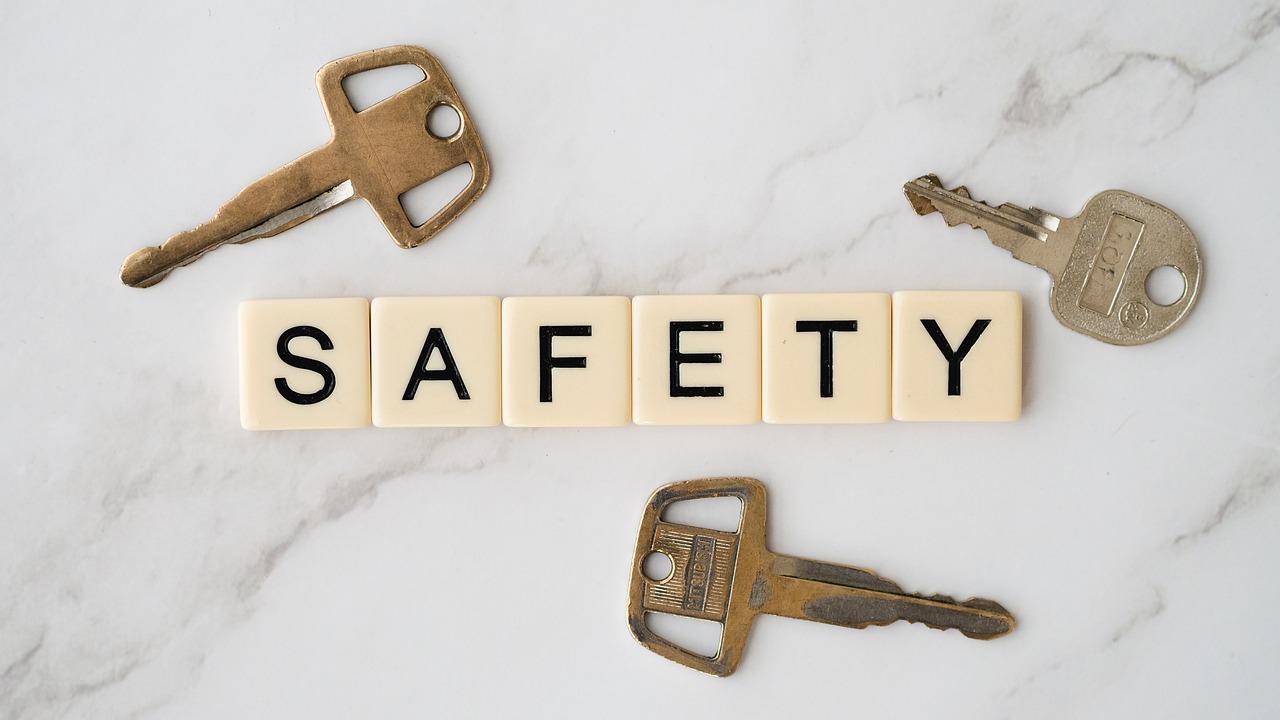Safety Norms – Deciphered through an Understanding of Human Behavior
In our increasingly complex world, safety norms are not just a set of rules; they are a reflection of human behavior, shaped by our perceptions, emotions, and social interactions. Understanding these psychological factors is crucial for enhancing safety measures across various environments, from workplaces and schools to public spaces. It’s fascinating how our minds work when it comes to assessing risk and making decisions that can either protect us or put us in danger. So, how do we navigate this intricate web of human behavior to foster a culture of safety? Let’s dive deeper into the psychology of risk perception and the influence of social norms.
At the heart of safety norms lies the concept of risk perception. How do we, as individuals, perceive risks in our daily lives? This is where cognitive biases come into play. For instance, many people tend to overestimate the likelihood of dramatic events, like plane crashes, while underestimating more mundane risks, such as car accidents. This skewed perception can lead to misguided safety practices. Emotional responses also heavily influence our decision-making. When faced with a perceived threat, our instinctual reactions can either prompt us to take precautionary measures or, conversely, lead us to ignore the danger altogether. Understanding these psychological nuances is essential for developing effective safety protocols that resonate with individuals on a personal level.
Social norms are powerful drivers of behavior, especially when it comes to safety practices. Think about it: how often do we adjust our actions based on what others are doing? Group dynamics and peer influences can either promote safe behaviors or, unfortunately, undermine them. For example, if everyone in a group is ignoring safety protocols, an individual may feel pressured to conform, even if they know better. This is where the concepts of conformity and compliance come into play.
The desire to fit in can lead to both positive and negative outcomes regarding safety norms. On one hand, if a group collectively prioritizes safety, individuals are likely to follow suit, creating a culture of safety. On the other hand, the pressure to conform can also lead to risky behaviors if the group disregards safety measures. It’s a double-edged sword that highlights the importance of fostering a positive safety culture within groups.
Groupthink is a psychological phenomenon that can severely hinder effective safety decision-making. When individuals prioritize harmony and consensus over critical analysis, they may overlook potential hazards or dismiss alternative viewpoints. This suppression of dissent can lead to unsafe practices, as critical thinking takes a backseat to the desire for group cohesion. For instance, in a workplace setting, if everyone agrees to skip safety checks to meet a deadline, the consequences can be dire.
Peer pressure is another significant factor that affects safety behaviors. Often, individuals may prioritize social acceptance over their own safety, leading to risky choices. This is particularly evident in environments like schools or social gatherings, where the need to conform can overshadow personal judgment. Recognizing and addressing the impact of peer pressure is crucial for promoting safe behaviors among individuals.
Behavioral economics offers valuable insights into how we can enhance compliance with safety norms. By understanding the principles of incentives and deterrents, organizations can design safety programs that motivate individuals to prioritize safety. For example, implementing reward systems for adhering to safety protocols can significantly improve compliance rates. Conversely, clear consequences for unsafe behaviors can deter individuals from taking unnecessary risks.
Effective training and education are essential for promoting safety. It’s not just about knowing the rules; it’s about internalizing them and understanding their importance. Different approaches to teaching safety norms can significantly impact behavior. For instance, traditional classroom training may not be as effective as hands-on, experiential learning.
Simulation-based training provides realistic scenarios for learning safety norms. By immersing individuals in lifelike situations, they can better grasp the importance of safety measures and how to apply them in real life. This method not only enhances knowledge but also builds confidence in handling potential safety challenges.
Encouraging a culture of continuous learning is vital for enhancing safety compliance. As environments and behaviors evolve, so too must our safety practices. Ongoing education allows individuals to stay informed about the latest safety protocols and adapt to new challenges effectively. By fostering an atmosphere where learning is valued, organizations can ensure that safety remains a top priority.
- What are safety norms? Safety norms are guidelines or rules that dictate safe behavior in various environments.
- How does human behavior influence safety? Human behavior, shaped by perceptions, emotions, and social interactions, significantly impacts how safety norms are followed.
- Why is training important for safety compliance? Training ensures that individuals understand safety protocols and can apply them effectively in real-life situations.
- What role do social norms play in safety behavior? Social norms can either promote or undermine safety practices, depending on group dynamics and peer influences.

The Psychology of Risk Perception
Understanding how individuals perceive risks is crucial in shaping safety norms. The way we interpret danger isn't just a straightforward calculation of facts; it's a complex interplay of cognitive biases and emotional responses. For instance, have you ever noticed how some people are terrified of flying yet feel perfectly safe driving a car, despite statistics showing that air travel is much safer? This discrepancy illustrates the psychological factors at play in risk perception.
Cognitive biases, like the availability heuristic, can heavily influence how we assess risks. This bias leads individuals to judge the likelihood of an event based on how easily they can recall similar instances. If someone has recently heard about a plane crash, they might overestimate the dangers of flying, even if the overall statistics are in favor of air travel. On the flip side, if they haven't heard of any car accidents lately, they may underestimate the risks associated with driving. This cognitive distortion can lead to a distorted sense of safety.
Emotions also play a significant role in how we perceive risk. Fear can cloud judgment, causing people to react impulsively rather than rationally. For example, during a fire drill, individuals may panic and make unsafe choices, such as rushing toward the nearest exit without considering if it’s the safest route. The emotional response to perceived danger often overrides logical thinking, leading to decisions that might compromise safety.
Moreover, our backgrounds and experiences shape our risk perceptions. Someone who has experienced a traumatic event, like a car accident, may develop an exaggerated fear of driving. In contrast, another person who has never faced such an event might view driving as a mundane activity with little risk. This variance in perception highlights the importance of understanding the individual context when developing safety measures.
To effectively enhance safety norms, it’s essential to consider these psychological factors. By addressing cognitive biases and emotional responses, safety programs can be tailored to resonate more with individuals' perceptions. For instance, using relatable scenarios and real-life testimonials can help bridge the gap between perception and reality. When people can connect emotionally with safety messages, they are more likely to internalize them and change their behaviors accordingly.
In summary, the psychology of risk perception is a multifaceted area that significantly impacts how people engage with safety norms. By understanding the cognitive and emotional factors at play, we can design more effective safety interventions that not only inform but also resonate with individuals on a deeper level. After all, when it comes to safety, it’s not just about the rules; it’s about how people feel and think about those rules.
- What is risk perception? Risk perception refers to how individuals interpret and understand the risks associated with various activities or situations.
- How do cognitive biases affect safety decisions? Cognitive biases can distort an individual's judgment, leading them to overestimate or underestimate risks based on personal experiences or emotional responses.
- Why is it important to understand psychological factors in safety? Understanding psychological factors helps in designing effective safety programs that resonate with people's perceptions, ultimately leading to better compliance and safer environments.

Influence of Social Norms on Safety Behavior
When it comes to safety, the influence of social norms is profound and often underestimated. Social norms are the unwritten rules that govern behavior within a group, and they can significantly shape how individuals approach safety practices. Imagine being in a workplace where everyone is taking shortcuts; the pressure to conform can lead individuals to prioritize fitting in over adhering to safety protocols. This phenomenon highlights the importance of understanding the psychology behind social norms and their impact on safety behavior.
One of the key aspects of social norms is that they can either promote or undermine safety behaviors. For instance, if a team consistently prioritizes speed over safety, new members might feel compelled to follow suit, disregarding established safety protocols. On the flip side, when a culture of safety is ingrained in a group, individuals are more likely to adhere to safety practices, even in the face of peer pressure. This duality raises important questions: How can organizations foster positive social norms that enhance safety? What strategies can be employed to counteract negative influences?
To delve deeper, let's explore some critical factors that contribute to the influence of social norms on safety behavior:
- Group Dynamics: The interactions and relationships within a group can dictate how safety norms are perceived and followed. A supportive environment encourages open discussions about safety, while a toxic atmosphere may suppress concerns.
- Peer Influence: The desire for acceptance can lead individuals to mimic the behaviors of their peers, regardless of whether those behaviors are safe or unsafe. This is especially true in high-pressure environments.
- Leadership Role: Leaders play a crucial role in shaping safety norms. When leaders prioritize safety and model safe behaviors, it sets a standard for the rest of the team.
Additionally, the concept of conformity is vital in understanding how social norms affect safety behavior. People often conform to what they perceive as group behavior, even when it contradicts their own beliefs about safety. This tendency can lead to both positive and negative outcomes. For instance, if a group collectively decides to wear safety gear, it reinforces the norm of safety. However, if the majority dismisses safety protocols, individuals may feel pressured to follow suit, compromising their safety.
Conformity can be a double-edged sword. It can encourage compliance with safety measures when the majority adheres to them, but it can also lead to dangerous situations when the group norm is to disregard safety. The desire to fit in can be so strong that individuals may ignore their instincts about safety, leading to risky behavior. Organizations must be vigilant about these dynamics and actively work to create a culture where safety is a shared value.
Another critical aspect is groupthink, where the desire for harmony or conformity in a group results in an irrational or dysfunctional decision-making outcome. In safety contexts, groupthink can suppress critical thinking and lead to unsafe practices. When team members prioritize consensus over critical evaluation of safety practices, it can create a dangerous environment. Organizations need to encourage open dialogue and critical thinking to combat groupthink, allowing individuals to voice concerns without fear of judgment.
Peer pressure is a significant factor that can influence safety behaviors. In many cases, individuals may choose to engage in risky behavior simply to gain acceptance from their peers. This is particularly evident in high-stakes environments, such as construction sites or laboratories, where the pressure to perform can overshadow safety considerations. It's essential for organizations to recognize this dynamic and implement strategies that promote safe behaviors while minimizing the impact of peer pressure.
In conclusion, understanding the influence of social norms on safety behavior is crucial for creating effective safety measures. By fostering a culture that prioritizes safety and encourages open communication, organizations can mitigate the risks associated with negative social influences. Ultimately, the goal is to shift the narrative around safety from one of compliance to one of shared responsibility and collective well-being.
- What are social norms? Social norms are the unwritten rules that govern behavior within groups, influencing how individuals act in various situations.
- How do social norms affect safety behavior? Social norms can either promote or undermine safety practices, depending on the group dynamics and the prevailing attitudes towards safety.
- What is groupthink? Groupthink is a psychological phenomenon where the desire for group harmony leads to irrational decision-making, often compromising safety.
- How can organizations counteract negative social influences? Organizations can foster a culture of safety through open communication, leadership modeling safe behaviors, and encouraging critical thinking.

Conformity and Compliance
Conformity is a fascinating psychological phenomenon that can significantly impact our safety behaviors. Imagine standing in a crowded elevator; if everyone else is standing still, you might feel compelled to do the same, even if you’re in a hurry. This desire to fit in often leads individuals to adopt the safety norms of their peers, which can have both positive and negative consequences. On one hand, when a group prioritizes safety, conformity can lead to enhanced compliance with safety protocols. However, when safety practices are lax, the urge to conform can lead to dangerous situations. This duality highlights the importance of understanding how conformity shapes our behavior in safety contexts.
One of the critical aspects of conformity is the concept of social proof. When we see others engaging in safe practices, we are more likely to follow suit. For instance, if a team consistently wears helmets on a construction site, new employees are likely to adopt this behavior, reinforcing a culture of safety. Conversely, if risky behaviors are normalized within a group, individuals may feel pressured to disregard safety norms to fit in. This creates a paradox where the collective behavior of a group can either uplift safety standards or contribute to their decline.
Moreover, the pressure to conform can lead to a phenomenon known as groupthink. In a groupthink scenario, the desire for harmony and conformity results in irrational or dysfunctional decision-making. For instance, if a group of workers decides to ignore safety protocols to meet a deadline, the pressure to conform can suppress dissenting opinions. This lack of critical evaluation can lead to unsafe practices, as individuals may prioritize group cohesion over their own safety concerns. It’s crucial to foster an environment where questioning and discussing safety practices is encouraged, allowing for a more robust safety culture.
To illustrate how conformity influences safety compliance, consider the following table that outlines the effects of conformity in different scenarios:
| Scenario | Conformity Effect | Outcome |
|---|---|---|
| Workplace Safety Meeting | High conformity | Increased adherence to safety protocols |
| Construction Site without Helmets | Low conformity | Increased risk of accidents |
| Emergency Drill Participation | Peer encouragement | Higher engagement and preparedness |
Ultimately, understanding the dynamics of conformity and compliance is essential for enhancing safety measures. Organizations must strive to create a culture that promotes safe behaviors through positive peer influence, while also addressing the potential pitfalls of conformity. By encouraging open dialogue about safety norms and fostering an environment where individuals feel empowered to voice their concerns, we can create a safer world for everyone.
- What is conformity in safety behavior?
Conformity in safety behavior refers to the tendency of individuals to align their actions with the norms and behaviors of a group, which can influence their adherence to safety protocols.
- How does peer pressure affect safety compliance?
Peer pressure can lead individuals to prioritize social acceptance over their own safety, potentially resulting in risky behaviors if the group norms are not aligned with safety practices.
- What can organizations do to encourage safety compliance?
Organizations can foster a culture of safety by promoting open communication, encouraging positive peer influence, and providing continuous training on safety practices.

Groupthink and Safety Decisions
Groupthink is a psychological phenomenon that occurs when a group of people prioritize consensus and harmony over critical analysis and individual opinions. This can be particularly dangerous in safety decision-making contexts, where the stakes are high and the potential for negative outcomes is significant. When team members feel pressured to conform to the prevailing viewpoint, they may suppress their doubts or concerns, leading to decisions that are not thoroughly vetted. Imagine a ship crew where everyone agrees to sail into a storm because no one wants to be the odd one out; this is groupthink in action, and it can have dire consequences.
One of the most concerning aspects of groupthink is that it often leads to a lack of creativity and innovation in problem-solving. When individuals feel that their ideas will not be welcomed, they are less likely to voice them. For instance, in a workplace safety meeting, if employees are aware that dissenting opinions are frowned upon, they may choose to remain silent, even if they have valuable insights that could prevent accidents. This silence can create an environment where unsafe practices are normalized, as critical discussions about risks and safety measures are stifled.
To combat groupthink, organizations can implement several strategies. Firstly, fostering an open and inclusive culture is essential. Encouraging team members to voice their opinions—no matter how unconventional—can lead to richer discussions and better safety outcomes. Additionally, bringing in an outsider or a devil's advocate can challenge the group's thinking and stimulate critical analysis. This approach can be likened to having a referee in a sports game; their role is to ensure that the rules are followed and that all players have a fair chance to contribute.
Moreover, training programs that focus on critical thinking and decision-making can be invaluable. These programs can equip team members with the skills they need to analyze situations more effectively, encouraging them to question assumptions and consider alternative perspectives. By promoting a culture of constructive dissent, organizations can mitigate the risks associated with groupthink and enhance their overall safety protocols.
In summary, recognizing and addressing groupthink in safety decision-making is crucial for fostering a safe environment. By encouraging open dialogue, challenging the status quo, and providing the necessary training, organizations can empower their teams to make informed, safety-conscious decisions. The goal is to create a workplace where all voices are heard, and safety is a shared responsibility.
- What is groupthink? Groupthink is a psychological phenomenon where the desire for harmony or conformity in a group results in irrational or dysfunctional decision-making.
- How does groupthink affect safety decisions? It can lead to poor safety decisions as individuals may suppress their doubts and fail to voice concerns, prioritizing consensus over critical evaluation.
- What are some strategies to combat groupthink? Encouraging open communication, involving outsiders in discussions, and providing training on critical thinking are effective strategies.
- Why is it important to address groupthink in safety contexts? Addressing groupthink is vital for ensuring that all safety concerns are considered, ultimately leading to a safer work environment.

Peer Pressure in Safety Contexts
Peer pressure is a powerful force that can significantly influence individual behavior, especially in safety contexts. Imagine a group of friends deciding whether to engage in a risky activity, such as climbing a steep cliff without proper gear. The desire to fit in or be accepted by peers can lead individuals to make decisions that compromise their safety. It's not just about wanting to be liked; it's about the psychological tug-of-war that occurs when personal safety is weighed against social acceptance.
In many situations, people may feel compelled to act against their better judgment simply because they fear being ostracized or ridiculed by their peers. This phenomenon can be particularly prevalent in environments like workplaces, schools, or even social gatherings, where the collective mindset often overshadows individual concerns. For instance, if a group of coworkers decides to skip safety protocols during a project because “everyone else is doing it,” an individual might feel pressured to conform, despite knowing the potential consequences.
To illustrate this point, consider the following scenarios where peer pressure can lead to unsafe practices:
- Workplace Safety: Employees may ignore safety gear requirements if they observe their colleagues doing the same, believing that conforming will enhance their social standing within the team.
- Sports and Recreation: Athletes might push themselves to perform dangerous stunts or ignore warnings about safety equipment if they feel that their peers expect them to take risks.
- Social Gatherings: Young adults might engage in reckless behavior, such as drinking and driving, simply because their friends are doing it and they want to avoid feeling left out.
Understanding the dynamics of peer pressure is crucial for developing effective safety interventions. By recognizing the factors that drive individuals to prioritize social acceptance over personal safety, organizations can implement strategies to mitigate these influences. For example, fostering an environment where safety is collectively valued can help shift the norm. When individuals see their peers actively promoting safe practices, they are more likely to follow suit.
Moreover, education plays a vital role in combating negative peer pressure. Teaching individuals about the potential consequences of risky behaviors and encouraging open discussions about safety can empower them to make informed decisions, even in the face of peer influence. This approach not only enhances individual safety but also promotes a culture of accountability, where everyone feels responsible for maintaining a safe environment.
In conclusion, peer pressure in safety contexts is a complex issue that requires a nuanced understanding of human behavior. By addressing the psychological factors at play, we can create safer environments where individuals feel empowered to prioritize their well-being over the need for social acceptance.
What is peer pressure in safety contexts?
Peer pressure in safety contexts refers to the influence that individuals feel from their peers to conform to certain behaviors, which can sometimes lead to unsafe choices. It often manifests when people prioritize social acceptance over their safety.
How can organizations combat negative peer pressure related to safety?
Organizations can combat negative peer pressure by fostering a culture of safety, providing education on the importance of safety protocols, and encouraging open discussions about the potential consequences of risky behaviors.
What role does education play in addressing peer pressure?
Education helps individuals understand the risks associated with unsafe behaviors and empowers them to make informed choices. It can also promote a sense of accountability among peers, encouraging them to look out for one another.

Behavioral Economics and Safety Compliance
Behavioral economics is a fascinating field that merges psychology and economics, providing insights into how people make decisions, especially regarding safety compliance. It emphasizes that our choices are not always rational and are often influenced by various psychological factors. For instance, individuals may underestimate risks or overvalue immediate rewards, leading to unsafe behaviors. Understanding these tendencies is crucial for developing effective safety norms.
One of the core principles of behavioral economics is the concept of incentives. When safety measures are tied to tangible rewards, individuals are more likely to comply. For example, in a workplace setting, offering incentives such as bonuses or recognition for adhering to safety protocols can significantly enhance compliance rates. This creates a win-win situation where employees feel valued, and the organization benefits from reduced accidents and injuries.
On the flip side, the role of deterrents cannot be overlooked. When individuals perceive that the consequences of unsafe behavior are severe, they are more likely to adhere to safety norms. Consider a scenario where a company implements strict penalties for safety violations. While this may initially seem harsh, it can effectively shift the mindset of employees towards prioritizing safety. However, it's essential to strike a balance; too much focus on punishment can lead to fear rather than genuine compliance.
Another interesting aspect of behavioral economics is the concept of framing. How a safety message is presented can significantly impact its effectiveness. For instance, saying "90% of our employees follow safety protocols" can encourage others to conform, while "10% of our employees do not follow safety protocols" might instill fear. This highlights the importance of positive messaging and the power of social proof in promoting safety behaviors.
Moreover, default options play a crucial role in decision-making. When safety measures are presented as the default choice, individuals are more likely to stick with them. For example, if a company automatically enrolls employees in a safety training program, rather than requiring them to opt-in, participation rates will likely increase. This approach leverages the natural human tendency to stick with the status quo, making it easier for individuals to comply with safety norms without even thinking about it.
In summary, applying behavioral economics principles to safety compliance can lead to more effective strategies that resonate with human behavior. By understanding how incentives, deterrents, framing, and default options influence decision-making, organizations can craft safety measures that not only protect individuals but also foster a culture of compliance. As we move forward, it’s crucial to keep these psychological insights in mind when developing and implementing safety protocols.
- What is behavioral economics?
Behavioral economics is the study of how psychological factors influence economic decision-making, often leading to irrational choices.
- How can incentives improve safety compliance?
Incentives can motivate individuals to adhere to safety norms by providing tangible rewards for compliance.
- What role do deterrents play in safety practices?
Deterrents can discourage unsafe behaviors by highlighting the severe consequences of non-compliance.
- How does framing affect safety messages?
The way safety information is presented can significantly influence individuals' perceptions and behaviors regarding safety.
- What are default options in safety compliance?
Default options are pre-selected choices that individuals are more likely to stick with, making compliance easier.

Training and Education in Safety Practices
When it comes to ensuring safety in any environment, whether it’s a bustling construction site or a quiet office, effective training and education are absolutely crucial. Think of safety training as the backbone of a healthy workplace; without it, the structure can easily crumble. The goal here is not just to check off boxes on a compliance list but to instill a deep-rooted understanding of safety norms in every individual. This understanding transforms into behavior that prioritizes safety over everything else.
One of the most impactful approaches to teaching safety norms is through simulation-based training. This method immerses individuals in realistic scenarios that they might encounter in their specific work environments. Imagine being in a virtual reality setup where you can practice emergency procedures without any real-world consequences. This kind of training allows participants to experience the pressure and urgency of safety situations, making them better prepared for actual incidents. The effectiveness of simulation-based training is underscored by studies showing that individuals who undergo this type of training retain information better and respond more effectively in real-life emergencies.
Moreover, fostering a culture of continuous learning and adaptation is essential for maintaining high safety standards. Safety practices are not static; they evolve with new technologies, regulations, and understandings of human behavior. By encouraging ongoing education, organizations can ensure that their employees are always up to date with the latest safety protocols. This could involve regular workshops, refresher courses, or even informal lunch-and-learn sessions. The idea is to create an environment where learning is not just encouraged but celebrated.
To illustrate the impact of continuous learning on safety compliance, consider the following table:
| Training Method | Impact on Safety Compliance | Frequency of Training |
|---|---|---|
| Simulation-Based Training | High retention of safety protocols | Quarterly |
| Workshops and Seminars | Increased awareness of new regulations | Bi-annual |
| Informal Learning Sessions | Enhanced team communication about safety | Monthly |
Ultimately, the combination of structured training programs and a culture that promotes continuous learning creates a robust safety environment. Employees who feel empowered and knowledgeable are more likely to take personal responsibility for their safety and that of their colleagues. This proactive approach can significantly reduce the incidence of workplace accidents and injuries, leading to a healthier, more productive work atmosphere.
- What is the importance of training in safety practices? Training is essential as it equips employees with the knowledge and skills needed to recognize and respond to safety hazards effectively.
- How often should safety training be conducted? Safety training should be conducted regularly, with a mix of formal and informal sessions to ensure continuous learning.
- What are the benefits of simulation-based training? Simulation-based training provides a realistic experience that enhances retention and prepares individuals for real-life emergencies.
- How can organizations foster a culture of continuous learning? Organizations can foster this culture by encouraging open communication, providing resources for ongoing education, and recognizing employees who prioritize safety.

Simulation-Based Training
When it comes to safety training, traditional methods often feel like trying to teach someone to swim by reading them a book. You can explain the strokes and the importance of not panicking, but until they actually jump into the water, the real learning doesn’t happen. flips this concept on its head by immersing individuals in realistic scenarios where they can practice safety norms in a controlled yet dynamic environment.
This approach is particularly effective because it engages multiple senses, making the learning experience more memorable. Imagine a firefighter training in a virtual reality (VR) environment where they face a simulated blaze. They can feel the heat, hear the crackling flames, and even see the smoke. This kind of immersive training not only enhances their understanding of safety protocols but also prepares them for the adrenaline-fueled chaos of real-life emergencies. The psychological impact of such training is profound; it builds confidence and helps reduce anxiety when faced with actual dangerous situations.
Moreover, simulation-based training allows for immediate feedback. In traditional settings, trainees might wait for a review session to understand what they did wrong. However, in a simulation, they can see the consequences of their actions in real-time. For instance, if a worker in a manufacturing plant neglects to wear protective gear during a simulated hazardous spill, they can immediately witness the potential fallout—both in terms of personal safety and operational efficiency. This instant feedback loop is crucial for reinforcing positive behaviors and correcting mistakes before they lead to catastrophic outcomes.
Another significant advantage of simulation-based training is its adaptability. Safety norms can vary widely across different industries and environments. By utilizing simulations, organizations can tailor training programs to reflect specific risks and challenges unique to their field. For example, a construction company might simulate a fall from height scenario, while a healthcare provider could focus on emergency response in a hospital setting. This targeted approach ensures that the training is relevant and applicable, thereby enhancing the likelihood of compliance with safety norms.
In addition to enhancing individual skills, simulation-based training fosters teamwork and communication. Safety is rarely a solo endeavor; it often requires collaboration among team members. Simulated environments can create scenarios where participants must work together to solve problems, communicate effectively, and make quick decisions. This not only prepares them for real-life situations but also strengthens group dynamics and builds a culture of safety within the organization.
In conclusion, simulation-based training is a game-changer in the realm of safety practices. By providing a realistic, engaging, and adaptive learning experience, it equips individuals with the skills and confidence they need to navigate potentially dangerous situations. As we continue to evolve our understanding of human behavior in safety contexts, embracing innovative training methods like simulations will be key to enhancing compliance and ultimately saving lives.
- What is simulation-based training? Simulation-based training is an immersive learning method that uses realistic scenarios to teach safety norms and practices.
- How does it differ from traditional training? Unlike traditional training, which often relies on lectures and theoretical knowledge, simulation-based training allows participants to practice in real-time, providing immediate feedback and a more engaging experience.
- What industries benefit from simulation-based training? Many industries, including healthcare, construction, manufacturing, and emergency services, can benefit from simulation-based training due to its tailored approach to specific risks and challenges.
- Can simulation-based training improve teamwork? Yes, simulation-based training often involves group scenarios that require effective communication and collaboration, thereby enhancing teamwork and safety culture.

Continuous Learning and Adaptation
In today's fast-paced world, the concept of continuous learning is not just a buzzword; it's a necessity, especially when it comes to safety practices. As environments evolve, so do the risks associated with them. Imagine trying to navigate a busy street without understanding the latest traffic rules—it's a recipe for disaster! Similarly, in workplaces or public spaces, failing to adapt safety practices to new information can lead to dire consequences. This is where the principle of continuous learning comes into play.
Continuous learning fosters an environment where individuals are encouraged to update their knowledge and skills regularly. This is particularly important in safety contexts, where outdated practices can put lives at risk. For instance, consider a construction site. New regulations may emerge, or innovative safety technologies may be introduced. Workers who are not educated about these changes may unknowingly expose themselves to hazards. Therefore, incorporating ongoing training sessions and workshops is crucial to ensure that everyone stays informed and prepared.
Moreover, adaptation is key to maintaining a safe environment. Just as a chameleon changes its color to suit its surroundings, organizations must be agile enough to adjust their safety protocols based on real-time feedback and changing circumstances. This can be achieved through the implementation of a systematic approach to safety management that includes:
- Regular assessments of current safety practices
- Incorporating feedback from employees
- Staying updated with industry trends and regulations
- Utilizing technology to track safety performance
One effective method of fostering continuous learning is through simulation-based training. This approach allows individuals to engage in realistic scenarios that mimic potential safety challenges they might face. By practicing in a controlled environment, they can learn how to respond effectively without the risk of real-world consequences. For example, emergency drills can prepare employees for actual emergencies, ensuring they know exactly what to do when the time comes.
Additionally, creating a culture that values feedback and encourages open communication can significantly enhance safety compliance. When employees feel safe to express their concerns or suggest improvements, it leads to a more proactive approach to safety. Regular meetings where team members can share experiences and lessons learned can be invaluable. This not only helps in identifying potential safety issues but also fosters a sense of community and shared responsibility for safety.
Finally, organizations should recognize that learning is not a one-time event but an ongoing journey. Just as the landscape of knowledge continuously expands, so too must our understanding of safety. By embracing a mindset of lifelong learning, individuals and organizations alike can better adapt to changes and enhance overall safety compliance. In essence, continuous learning and adaptation are not just strategies; they are essential components of a robust safety culture that can save lives.
- What is continuous learning in safety practices?
Continuous learning in safety practices refers to the ongoing process of updating knowledge and skills related to safety protocols to adapt to new information, technologies, and regulations. - Why is adaptation important for safety?
Adaptation is crucial because it allows organizations to modify safety practices based on real-time feedback and evolving risks, ensuring that safety measures remain effective and relevant. - How can simulation-based training enhance safety?
Simulation-based training provides realistic scenarios for individuals to practice their responses to safety challenges, reducing the likelihood of mistakes in real-life situations. - What role does feedback play in safety compliance?
Feedback encourages open communication and helps identify safety issues, leading to a proactive approach where employees feel empowered to contribute to safety improvements.
Frequently Asked Questions
- What are safety norms and why are they important?
Safety norms are guidelines and practices designed to protect individuals and groups in various environments. They are crucial because they help prevent accidents and injuries, ensuring a safer atmosphere for everyone involved. Think of them as the invisible shield that keeps us safe while we go about our daily lives.
- How does human behavior influence safety practices?
Human behavior plays a significant role in shaping safety practices. Our perceptions of risk, influenced by cognitive biases and emotional responses, can lead to decisions that either enhance or compromise safety. For example, if someone feels invincible, they might ignore safety precautions, putting themselves and others at risk.
- What is the role of social norms in safety behavior?
Social norms significantly impact safety behavior by dictating what is considered acceptable or expected within a group. When safety is valued in a social context, individuals are more likely to adhere to safety practices. Conversely, if the group downplays safety, individuals may feel pressured to follow suit, potentially leading to unsafe behaviors.
- What are cognitive biases, and how do they affect safety decisions?
Cognitive biases are systematic patterns of deviation from norm or rationality in judgment. They can distort our perception of risk and lead to poor safety decisions. For instance, the optimism bias can make people believe that accidents won't happen to them, causing them to neglect safety measures.
- How can training improve safety compliance?
Training enhances safety compliance by equipping individuals with the knowledge and skills needed to recognize and mitigate risks. Effective training programs, especially those that incorporate simulation-based learning, prepare individuals for real-life scenarios, making them more likely to apply what they've learned in practice.
- What is groupthink, and how does it impact safety decisions?
Groupthink is a psychological phenomenon where the desire for harmony in a group leads to irrational or dysfunctional decision-making. In safety contexts, this can suppress critical thinking and result in unsafe practices, as individuals may prioritize consensus over thorough evaluation of risks.
- How does peer pressure affect safety choices?
Peer pressure can significantly influence safety choices, often leading individuals to prioritize social acceptance over personal safety. This can manifest in risky behaviors, especially in environments where individuals feel the need to conform to the actions of their peers, even if those actions are unsafe.
- What strategies can be used to promote a culture of continuous learning in safety practices?
To foster a culture of continuous learning in safety practices, organizations can implement regular training sessions, workshops, and feedback mechanisms. Encouraging open discussions about safety experiences and lessons learned can also help individuals adapt to evolving safety challenges and improve overall compliance.



















